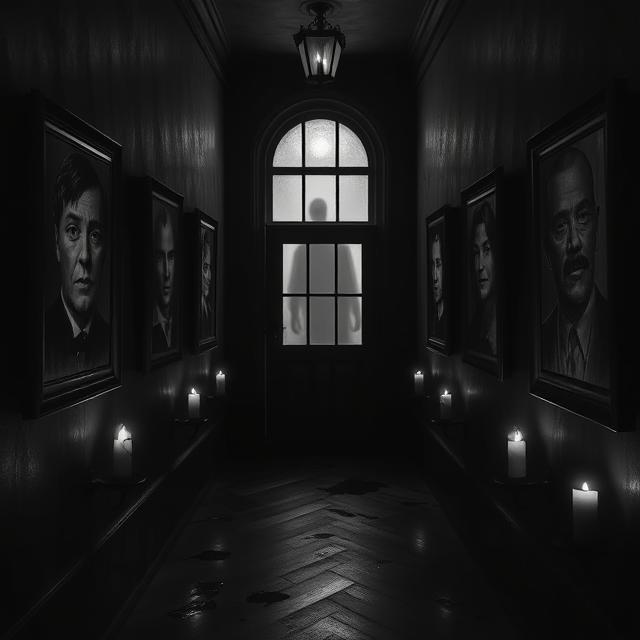Between 1971 and 1972, a silent killer stalked the streets of Washington, D.C., targeting young Black girls and discarding their bodies near major roadways. Despite taunting messages, eyewitnesses, and mounting fear, the killer was never caught.
The press barely covered it.
The authorities failed to connect the dots.
And decades later, the case remains cold.
He came to be known as The Freeway Phantom—a name that speaks to the anonymity and horror he left behind.
The First Victim: Carol Denise Spinks
On April 25, 1971, 13-year-old Carol Denise Spinks left her home to go to a 7-Eleven store just a few blocks away. Her mother had told her not to go, but a sibling sent her anyway.
She never came back.
Her body was found six days later, discarded near I-295. She had been sexually assaulted, strangled, and possibly kept alive for several days before being murdered.
This was no random crime. It was the beginning of a pattern.
A Pattern Emerges
Over the next 18 months, five more girls between the ages of 10 and 18 were abducted, murdered, and dumped—often near freeways or in wooded areas on the outskirts of D.C. and Prince George’s County.
Victims include:
- Darlenia Johnson (16) – Found near where Spinks was discovered.
- Brenda Crockett (10) – Made two eerie phone calls home during her abduction, referencing a “white man” and “going to Virginia.”
- Nenomoshia Yates (12) – Found within hours of her abduction.
- Brenda Denise Woodard (18) – The only victim found with a note, written in capital letters and left in her coat pocket.
- Diane Williams (17) – Last known victim, found along I-295.
All the girls were Black, lived in working-class neighborhoods, and were abducted in broad daylight or early evening hours.
Each body showed signs of sexual assault and strangulation.
The Killer’s Message
With victim Brenda Denise Woodard, the killer left a haunting note:
“This is tantamount to my insensitivity to people, especially women. I will admit the others when you catch me if you can!”
The letter was typed, folded carefully, and placed in her coat pocket. Her hands had been washed—suggesting the killer had some forensic awareness.
The message was personal, deliberate, and taunting—a calling card of someone who wanted to be known but still managed to remain a ghost.
The Investigation: Flawed and Fragmented
Multiple agencies worked the case: D.C. Metropolitan Police, Prince George’s County Police, and the FBI. But the lack of cooperation and poor communication crippled the investigation.
Suspects ranged from local gang members to a known serial killer who lived nearby, but nothing stuck.
Some even believed the killer could be a law enforcement officer, given the precision, forensic cleanliness, and ability to evade detection over such a long stretch.
But no one was ever arrested. No charges were filed.
Why the Freeway Phantom Was Forgotten
One reason the Freeway Phantom never gained national attention is disturbingly simple:
The victims were all young Black girls.
In the early 1970s, cases involving missing Black children were underreported, underfunded, and often dismissed. Unlike the media frenzy surrounding the Zodiac or Son of Sam, this killer’s crimes were quietly buried—just like his victims.
Theories and Speculation
Some believe the murders were committed by members of a local gang, and one former informant even claimed knowledge of the killer’s identity. Others argue it was a lone predator, possibly someone in a position of public trust.
The use of typewritten notes, the method of strangulation, and the deliberate body placement suggest planning and ritual—hallmarks of a methodical serial killer.
Yet no confirmed suspect has ever been publicly named.
The Case Today
Despite being over 50 years old, the Freeway Phantom case remains technically open. Families of the victims continue to seek justice, and recent pushes for cold case reviews have led to renewed interest.
But time is running out.
DNA evidence was limited in the early 1970s, and many files were lost or never digitized. Witnesses have died. Memories have faded.
Still, the story must be told.
The Freeway Phantom is more than a mystery—he’s a symbol of institutional neglect, racial bias, and the failure to protect the most vulnerable.
Six young lives were stolen.
A city was scarred.
And a predator disappeared without a trace.
Some monsters wear masks.
Others just blend into the background—and walk away.
For more cases like this, explore our archive. SinisterArchive.com—where the legends are real.




